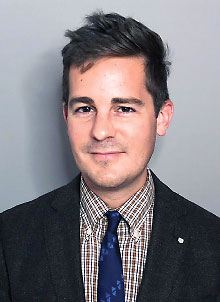Congress Passes First Significant Gun Safety Bill in Decades
Abstract
The Bipartisan Safer Communities Act provides funding for community-based violence prevention initiatives and state grants to create and implement red flag laws. Advocates say it is a small step in the right direction, but much more action is required to stymie gun violence.
Every day, an average of 64 Americans die by firearm suicide, according to the Educational Fund to Stop Gun Violence. As of July 17, there have been 354 mass shootings in the United States this year, according to the Gun Violence Archive.

Most Americans, including many gun owners, support basic measures to prevent gun violence, says Marc Manseau, M.D., M.P.H. These include universal background checks, safe storage requirements, and an assault weapons ban.
Advocates have been vocal about the need to pass gun safety policies for decades, yet few such policies have been enacted, and gun violence has become a commonplace aspect of American life. In June, following several tragic mass shootings, including the shooting at Robb Elementary School in Uvalde, Texas, Congress passed the Bipartisan Safer Communities Act. President Joe Biden signed it into law on June 25.
The legislation is the first significant federal legislative action to address gun violence prevention since the Brady Handgun Violence Prevention Act was passed in 1994, said Marc Manseau, M.D., M.P.H., co-founder of Psychiatrists for Gun Violence Prevention and a clinical assistant professor in the Department of Psychiatry at NYU Grossman School of Medicine.
“It is a small step in the right direction and therefore a victory,” he said. “However, we must recognize that this is a small step, indeed, and we therefore mustn’t be lulled into complacency and inaction simply because it passed,” he continued.
In a news release, APA outlined the major provisions included in the package for which it advocated, including the following:
$750 million in grants for states to create, implement, and improve extreme risk protection orders (ERPOs), also known as red flag laws.
Additional background checks for gun purchasers who are under age 21, including consideration of juvenile criminal records.
$250 million in funding for community-based violence prevention initiatives.
“This is a noteworthy, major piece of bipartisan legislation,” said Rebecca Capasso, M.D., membership coordinator for Psychiatrists for Gun Violence Prevention and a clinical assistant professor in the Department of Psychiatry at NYU Grossman School of Medicine. “I don’t think there’s any way forward in this country without compromising and working together across the political aisle.”
The package also includes numerous provisions that support mental health programs. In the release, APA emphasized that it is inaccurate to link mental illness with violence.

There is a lot of hesitancy among some psychiatrists to talk with their patients about guns, says Rebecca Capasso, M.D. “In training, we should be talking about how to speak to patients about this and encourage safe storage if they own guns.”
“I’m very concerned that the legislation expands access to mental health care because that promotes the false narrative that attributes gun violence to people with mental illness,” Capasso said. “We know that to be patently false” (“Mental Illness Too Often Wrongly Associated With Gun Violence”).
Capasso explained that the impulse to connect gun violence with mental illness may be rooted in the discomfort people feel with the complexity of violence. “People end up going to the very simplistic answer of ‘This person must be mentally unwell,’ rather than grappling with the multiple factors, including access to guns, that better explain why violence occurs,” she said.
The mental health provisions included in the Bipartisan Safer Communities Act include the following:
Almost $8 billion for the Medicaid Certified Community Behavioral Health Clinics program.
$150 million to states to support the implementation of the National Suicide Prevention Lifeline’s new three-digit dialing code, 988, to improve crisis response and prevention programs.
$500 million to the School-Based Mental Health Services program under Medicaid to increase the number of qualified mental health professionals in schools.
$250 million to states through the Community Mental Health Services Block Grant.
$80 million for the Pediatric Mental Health Care Access grant program.
$60 million for mental health training for primary care clinicians.
Assistance to states on how to increase access to telehealth services, among other items.
The law’s mental health funding is potentially lifesaving, said APA President Rebecca Brendel, M.D., J.D., in the news release, as more than half of gun deaths are suicides.
“We view this as the first step in a process that needs to continue,” APA CEO and Medical Director Saul Levin, M.D., M.P.A., said in the release.
Manseau noted the recent Supreme Court decision in New York State Rifle & Pistol Association v. Bruen, which struck down a New York law that limited when someone could carry a gun outside of the home. “It is very clear that we have a lot more work to do,” he said.
“The fact of the matter is we have more guns per capita than most other countries in the world, except war-torn countries like Yemen, and that’s going to cause the U.S. to have far higher rates of gun violence, including suicide and homicide, than almost any other country,” Manseau said. “Until we grapple with that fact and the politics surrounding it, we are not going to solve our gun violence problem.” ■



